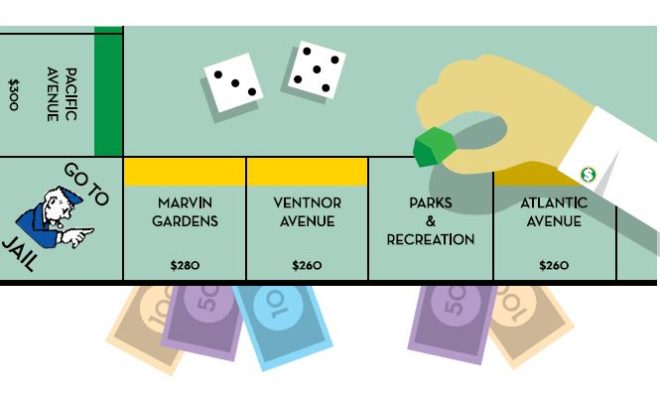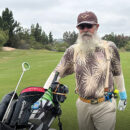Dark Clouds on Muni Golf’s Horizon

The SCGA opened last year with a bold announcement about 2020 being the year of municipal golf; the year we were going get down to focusing on certain challenges we defined as existential in the sector that has served for more than a century as the game’s growth engine.
A funny thing happened on the way to that year. As Lincoln reminded, we don’t control events; events control us. A hundred-year pandemic intervened, and 2020 became the year of coping with COVID.
We’re still coping, but the light at the end of this particular tunnel is getting brighter, and as it gets brighter and presages a return to some semblance of normality, we will get back to addressing those existential challenges. They didn’t go away; we merely put them on hold to address the immediate challenge of making golf’s case for being an activity almost uniquely suited to continuation during a pandemic.
COVID-19 has given golf an unexpected reprieve, and the industry has made much of it. But it has completely ignored another aspect of COVID-19 that is as consequential as the 26 percent bump that golf enjoyed over the last seven months of 2020: the hollowing out of the public sector.
A DISQUIETING TRUTH
Municipal budgets have been devastated. They are in free fall and promise to remain that way for some time. When Congress and the Federal Reserve passed out relief, they provided substantial support to virtually every sector and every constituency, but next to nothing to the nation’s state and local governments, which, unlike the national government, have to balance their budgets. Whether that indifference remains true with a new president and Congress is an open question, but we shouldn’t forget that the one sector that never recovered fully from the Great Recession is the public sector. It faces this downturn behind the rest.
Some of you will find that to be a long overdue haircut. Others will find it lamentable. Whatever your political beliefs, the following facts make it consequential for the California golf community. Twenty-two percent of the state’s golf stock is held by municipal governments. Roughly 40 percent of the game’s annual rounds are played on publicly owned courses, and more than 90 percent of the game’s growth programs are conducted on those courses. It’s going to be mighty tough to grow the game when the places where the industry has traditionally grown it are either gone or in distress.
WHEN CONGRESS AND THE FEDERAL RESERVE PASSED OUT RELIEF, THEY PROVIDED SUBSTANTIAL SUPPORT TO VIRTUALLY EVERY SECTOR AND EVERY CONSTITUENCY, BUT NEXT TO NOTHING TO THE NATION’S STATE AND LOCAL GOVERNMENTS…”
Those municipal courses in the state’s urban centers that turn profits are going to be vulnerable to having their net dollars diverted from planned capital projects to general fund coffers, in a mad dash to offset the drastic curtailments in tax receipts that are also the residue of COVID-19. This will create golf properties that are no longer capable of the reinvestments necessary to maintain their infrastructures in a manner conducive to attracting paying customers over the long run.
Those municipal courses that were marginal prior to COVID-19 aren’t going to survive once the COVID-19 party returns their tee sheets to some semblance of normality. Whatever appetite remained to subsidize their operations pre-COVID will be totally sated after COVID. We have already seen evidence of both disquieting phenomena.
NOWHERE TO GROW
In the short run, certain daily fee and non-equity clubs may benefit from newfound market share, but once the game is forced to again compete with other recreational and entertainment amenities, that benefit will begin to fade. And of course, if you live in the region’s biggest city (Los Angeles) you know that other than one daily-fee course on the northeastern edge of that city, all other golf courses are either private clubs or municipal courses. The daily-fee market was sacrificed to higher, better and much more lucrative land uses long ago.
The golf industry likes to talk the market-economy talk, but it tends to overlook the chapter on fungibility. Factories can cut production, lay off employees and take a number of steps short of closure. Small businesses like restaurants can close their doors and be replaced in very short order when markets pick back up; indeed, that’s a pretty good explanation of how much of Main Street in America operates.
But golf courses? There are no intermediary steps in a downturn. Once a golf course closes its doors —particularly in urban California, where most of the golfers are — it’s gone, never to be seen again.
As for planning and constructing new courses when the market goes back up, as it has over the last seven months? That’s a multiyear process that for the most part is onerously expensive, save for the kind of spectacular multi-course resort represented by a Bandon Dunes. And those courses don’t so much grow the game as provide a great golf vacation for the most avid and experienced golfers among us.
The pandemic that gave golf an unexpected boost has given the game the parallel challenge of a hollowed-out municipal stock. In truth, it has only accelerated a challenge long underway, one that the game has been slow to recognize. No, that understates it; the game has for the most part been blind to it, although it is beginning to dawn on at least some of the game’s normative leadership organizations that growing a game without places to grow it might be problematic.
Too little too late? Just in the nick of time? Somewhere in between? Some would say time will tell. Let me suggest that it will be the grit and determination of the greater golf community that will tell.











